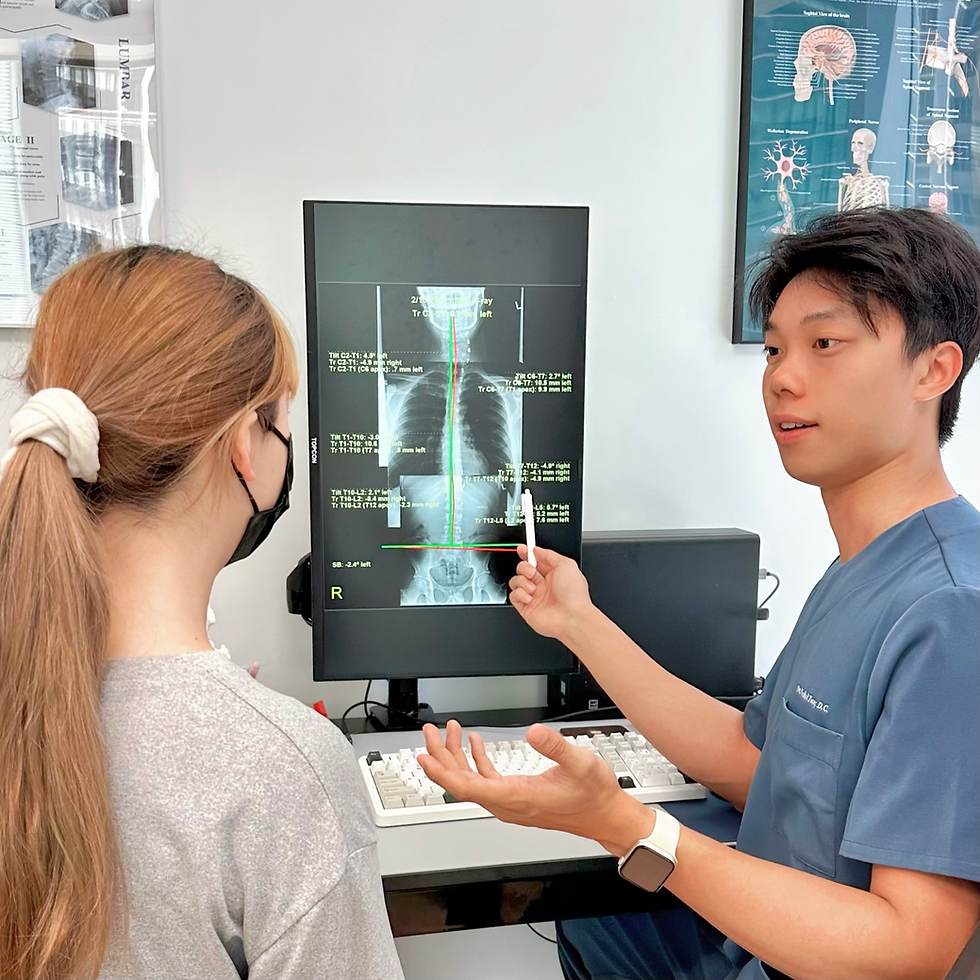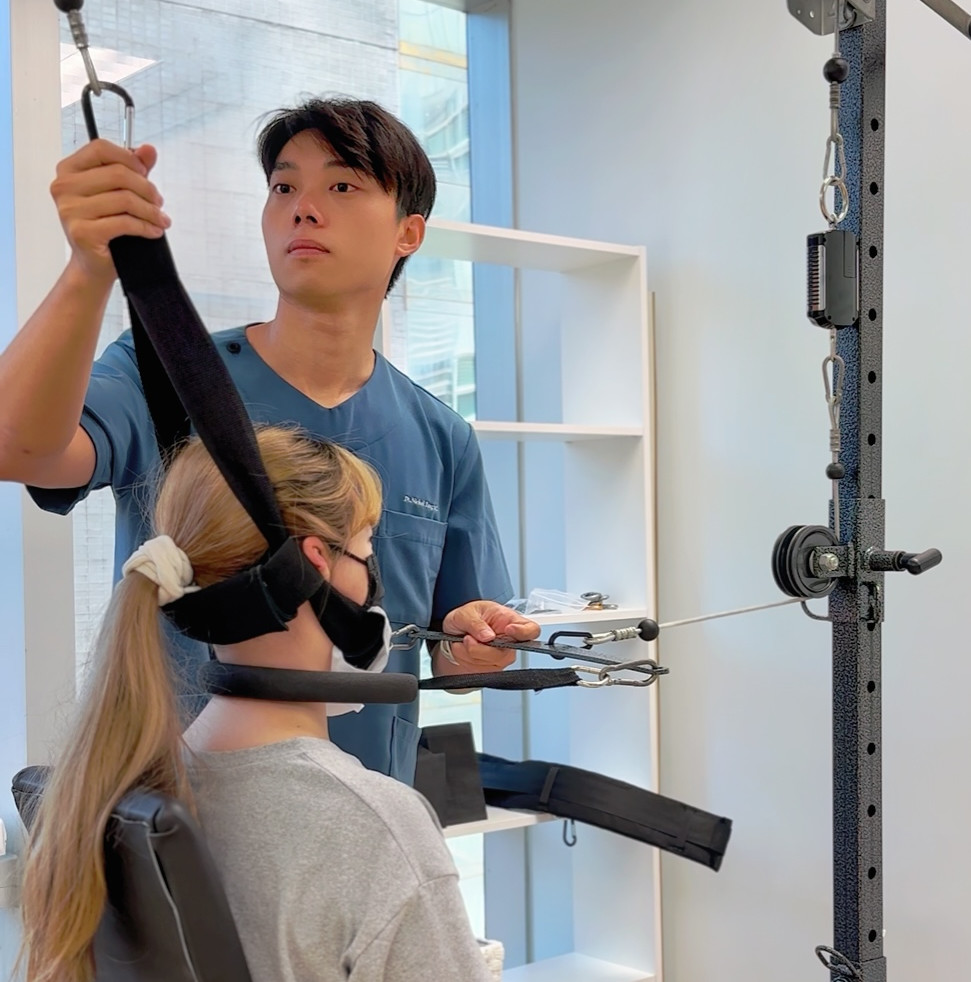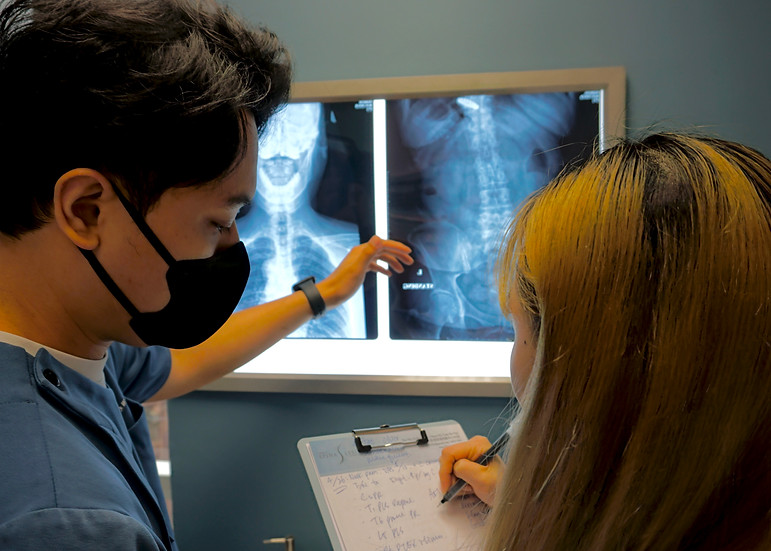
Spinalysis Procedure
In Spinalysis, it is our pleasure to witness your progression from a deconditioned spine to a healthy one.
Here is how Spinalysis make this happen.

1. Initial Assessment
Understanding the problem is crucial in finding a solution.
Our Registered Chiropractors will gather your medical history and conduct physical examinations including spinal and neuromuscular tests. Orthopedic tests will also help to identify the problems of individually involved muscles, ligaments, or joints, giving proper diagnosis to your conditions.
Afterward, our Chiropractic Assistants will assist with postural screening to identify any postural misalignments. Based on the results, our Registered Chiropractor may recommend a spinal radiographic series for further evaluations.


2. Xray Analysis & Report of Findings
Once we receive your X-ray, our Chiropractor will conduct a comprehensive analysis of your spinal and pelvic structures using the GLOCAL system.
During your second consultation, you will be informatively acknowledged by our Chiropractors about the severity of your spinal condition, as for the details of your individual care plan. Following that, you will be all set for your first chiropractic treatment by our clinical team.
3. Phase I: Symptom Alleviation
Among the majority of our clinical cases, patients often seek help while experiencing a series of symptoms, such as back pain, muscle aches, or numbness in the arms or legs.
During this intensive period, we will be focusing more on reducing your symptoms based on comprehensive analysis and examinations.


4. Phase II: Structural Correction
This phase is also part of the intensive care period, but it occurs when the symptoms have improved. The main difference between Phase I and Phase II is the primary goal.
Phase II focuses on correcting and further stabilizing the overall spinal alignment.
During this phase, there will be more emphasis on providing advice regarding lifestyle changes.
5. Re-Xray & Reassessment
Our Chiropractors may advise you to take extra radiographs after the intensive care period, which is about 6 months following your first treatment.
There are two major benefits of retaking X-rays:
-
Visualizing changes in your spinal structure: It allows our chiropractors to evaluate the efficiency of your treatment, based on data and evidence.
-
Formulating or fine-tuning adjustments and traction system for your maintenance phase.


6. Phase III: Maintenance
The spine functions round the clock as a lever, providing shape and posture to your skeletal system. Physical stresses are unavoidable, and they gradually deteriorate the spine, even if perfect posture is consistently maintained.
Hence, regular check-ups are recommended to ensure your spine can sustainably cope with these various stresses.

